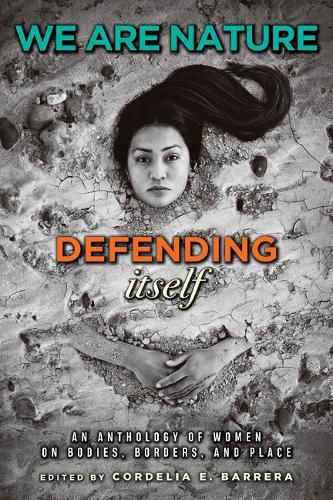Readings Newsletter
Become a Readings Member to make your shopping experience even easier.
Sign in or sign up for free!
You’re not far away from qualifying for FREE standard shipping within Australia
You’ve qualified for FREE standard shipping within Australia
The cart is loading…






In the words of series editor Steven L. Davis, We Are Nature Defending Itself: An Anthology of Women on Bodies, Borders, and Place is "a revelation, a multicultural blend of well-known and emerging writers who come together to give nature a voice in our literature and our lives." Not least of the many benefits to readers are its contributions from prominent Latina writers, presented here as advocates for the environment. Though this theme has long existed in Chicana literature, it has never been positioned as front and center as it is in this anthology.
Volume editor Cordelia E. Barrera also includes notable Anglo, African American, and Indigenous contributors, crafting a true cultural blend of distinctive writing that will appeal to older generations while inspiring new ones. By incorporating these border voices, this collection effectively challenges long-dominant mythologies of the American West and offers a prominent place for literatures of social justice and the environment.
The mix of poems, stories, and essays are divided into three sections: Bodies, Landscape, and Practices. Part I begins with the idea of experiencing and feeling a history of the body's contact with landscapes and places as repositories of knowledge. Part II extends beyond particulars of private or public life to consider issues of place as sites and locations of radical action. Part III features ruminations and traditions of remembering, highlighting reciprocal relationships to the natural world that extend outward to the ways "women's work" in and around the home shapes communal processes that reinforce continuity across time and space.
We Are Nature Defending Itself adds important new work to the growing canon of nature and borderlands writing by women of color. In turn, these new voices deepen and broaden our understanding of humanity and its relationship to the natural environment.
$9.00 standard shipping within Australia
FREE standard shipping within Australia for orders over $100.00
Express & International shipping calculated at checkout
In the words of series editor Steven L. Davis, We Are Nature Defending Itself: An Anthology of Women on Bodies, Borders, and Place is "a revelation, a multicultural blend of well-known and emerging writers who come together to give nature a voice in our literature and our lives." Not least of the many benefits to readers are its contributions from prominent Latina writers, presented here as advocates for the environment. Though this theme has long existed in Chicana literature, it has never been positioned as front and center as it is in this anthology.
Volume editor Cordelia E. Barrera also includes notable Anglo, African American, and Indigenous contributors, crafting a true cultural blend of distinctive writing that will appeal to older generations while inspiring new ones. By incorporating these border voices, this collection effectively challenges long-dominant mythologies of the American West and offers a prominent place for literatures of social justice and the environment.
The mix of poems, stories, and essays are divided into three sections: Bodies, Landscape, and Practices. Part I begins with the idea of experiencing and feeling a history of the body's contact with landscapes and places as repositories of knowledge. Part II extends beyond particulars of private or public life to consider issues of place as sites and locations of radical action. Part III features ruminations and traditions of remembering, highlighting reciprocal relationships to the natural world that extend outward to the ways "women's work" in and around the home shapes communal processes that reinforce continuity across time and space.
We Are Nature Defending Itself adds important new work to the growing canon of nature and borderlands writing by women of color. In turn, these new voices deepen and broaden our understanding of humanity and its relationship to the natural environment.